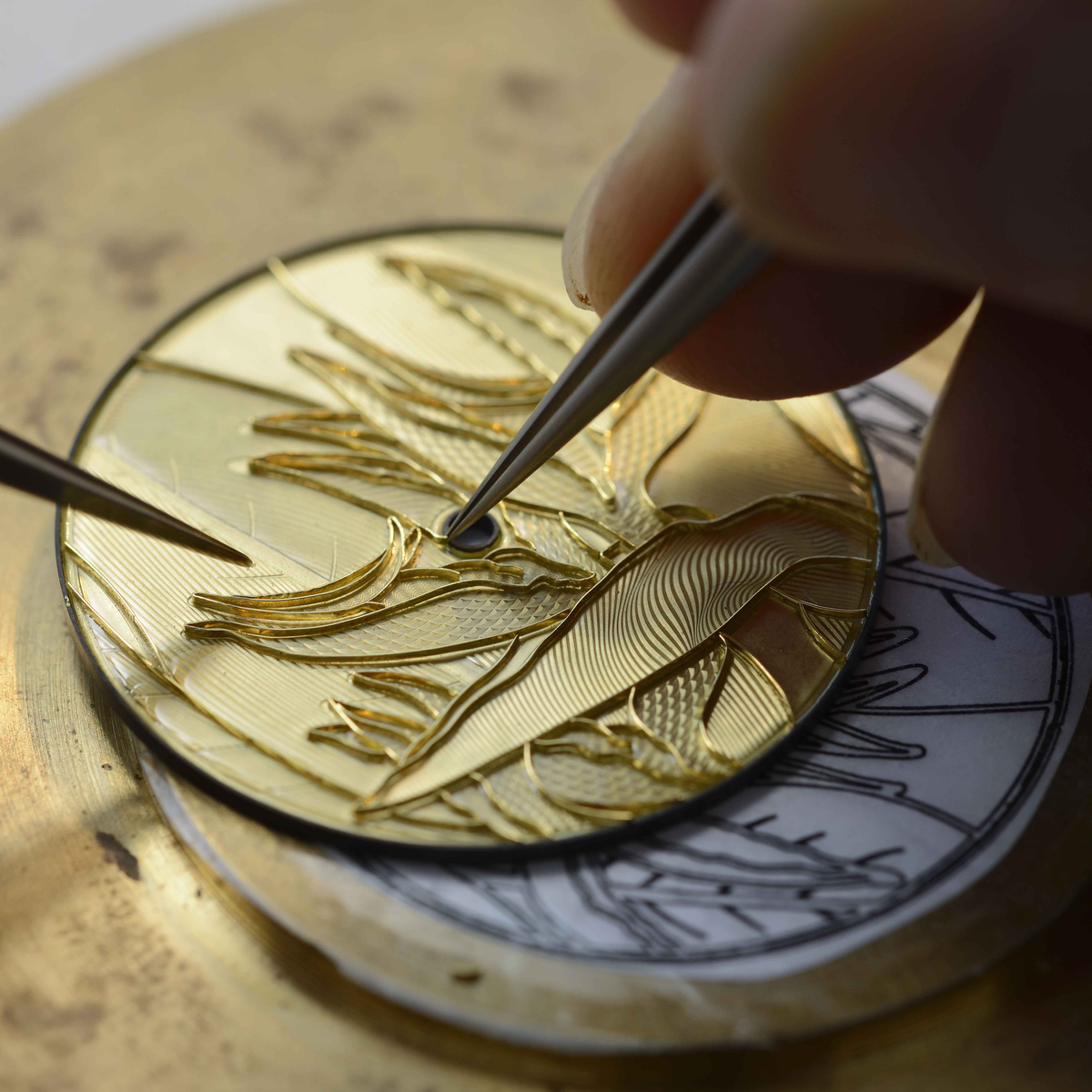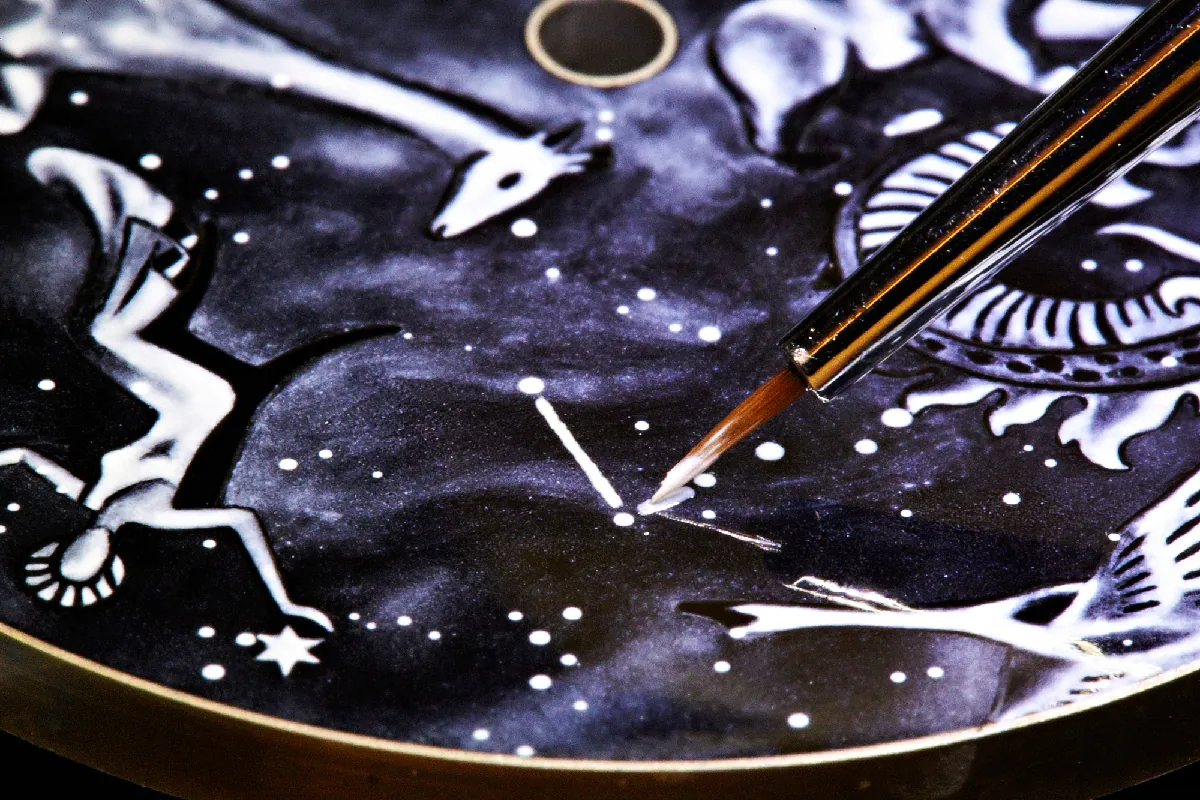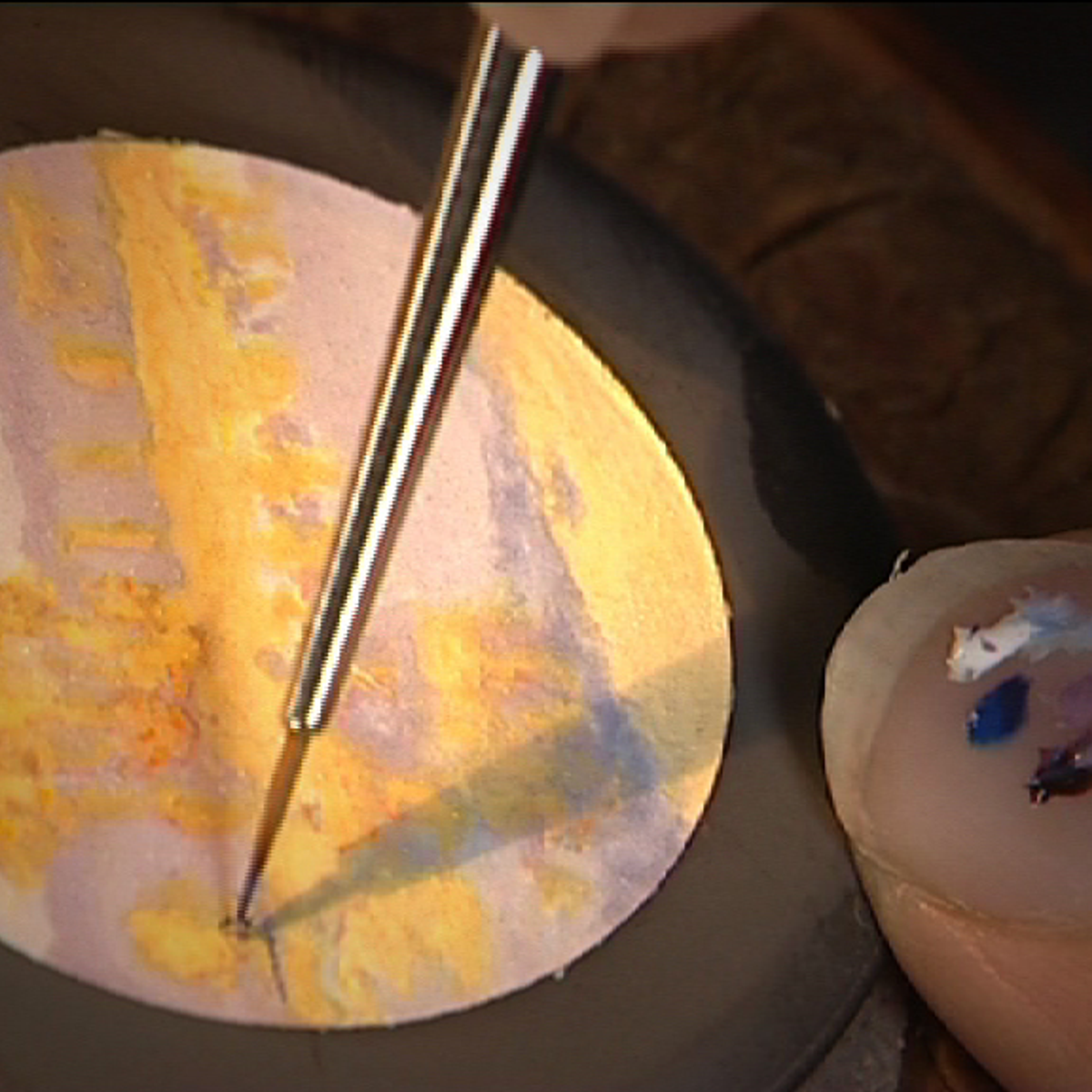Cloisonné :
The enamellist traces the contours of the pattern using fine gold wires, not even the width of a hair. The cells formed by these wires are then filled with layer after layer of enamel. The enamellist performs this operation up to sixty times, and fires the piece twelve or fifteen times, as each colour fuses at a different temperature.
Champlevé:
The engraver incises the metal to form the details of the chosen motif. The enamellist then fills these hollows with enamel, one colour at a time, firing each one in the furnace.
Miniature painting on enamel :
This technique, which appeared circa 1620-1630, can be likened to oil painting. The miniaturist outlines his subject on a surface that has been enamelled on both sides. The colour is then gradually built up using finely-ground enamel mixed to consistency with essential oil and fired between each application. The softest colours are usually applied last of all, and fired a final time. Even at this ultimate stage, a blast of heat can still irremediably erase all or part of the work.





